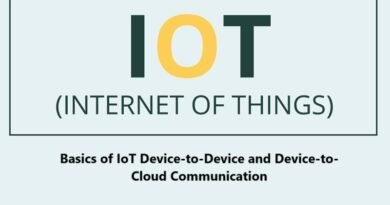How to Become a PCB Design Freelancer? ( Tools and Skills )
Are you passionate about PCB design and looking to embark on a freelance career? Becoming a PCB design freelancer can offer you the freedom to work on your own terms, explore exciting projects, and earn a lucrative income. However, like any profession, it requires the right tools and skills to succeed.
Instead of hiring a full-time employee or outsourcing to a large design firm, have you considered hiring a PCB design freelancer? In this article, we will explore the benefits of hiring a PCB design freelancer and why it might be the perfect solution for your design needs.
Getting Started with Intro of PCB Design Freelancer
In today’s technology-driven world, the demand for printed circuit board (PCB) designers is on the rise. As electronic devices become more complex and sophisticated, companies are seeking skilled professionals to create efficient and reliable PCB layouts. This growing demand has paved the way for an exciting career path as a freelance PCB designer. Freelancing in the PCB design industry offers numerous benefits and rewards. Firstly, it provides the freedom and flexibility to work on a variety of projects with different clients. As a freelancer, you have the opportunity to choose projects that align with your interests and expertise, allowing you to constantly expand your knowledge and skills.
Moreover, freelancing allows you to be your own boss. You have the autonomy to set your own schedule, work from anywhere, and take on as many or as few projects as you desire. This level of control over your work-life balance is a major advantage for those seeking a fulfilling career.
Another advantage of freelancing in PCB design is the potential for higher earnings. As a freelancer, you have the ability to negotiate your rates based on your experience and the complexity of the project. With the increasing demand for skilled PCB designers, there is ample opportunity to command competitive compensation.
Understanding PCB Design
PCB (Printed Circuit Board) design is a crucial aspect of electronics manufacturing. It involves creating a blueprint that serves as the foundation for assembling electronic components onto a board, enabling the functioning of various devices we use in our daily lives.
The importance of PCB design cannot be overstated. It ensures the proper functioning and reliability of electronic devices by providing a systematic layout for all the components. A well-designed PCB minimizes the risk of errors, reduces production costs, and enhances the overall efficiency of the manufacturing process.
Let’s dive into some basic components and terminology used in PCB design:
1. PCB Layers:
A PCB consists of multiple layers, typically ranging from two to twelve. Each layer serves a specific purpose, such as routing signals, providing power and ground planes, or accommodating components.
2. Traces:
Traces are conductive pathways on the PCB that connect different components. They are typically made of copper and carry electrical signals between various parts of the circuit.
3. Pads:
Pads are areas on the PCB where components are soldered. They act as connection points between the component leads and the traces.
4. Components:
Components are the building blocks of a PCB. They can include resistors, capacitors, integrated circuits, connectors, and more. Each component has specific electrical and mechanical properties that need to be considered during the design process.
5. Footprints:
Footprints define the physical layout and dimensions of each component on the PCB. They ensure proper alignment and soldering of the components onto the board.
Understanding these basic components and terminology is essential for anyone involved in PCB design. By mastering these fundamentals, designers can create efficient and reliable PCB layouts that meet the requirements of modern electronic devices.
Essential Tools For PCB Designer Freelancers
As a PCB design freelancer, having the right software tools can make all the difference in your work. One of the most popular software options for PCB design is Eagle. It offers a user-friendly interface and a wide range of features, making it suitable for both beginners and experienced designers. Eagle also has a large user community, which means you can easily find support and resources online. Altium Designer is another powerful software tool used in PCB design. It offers advanced features and a comprehensive design environment, making it a great choice for complex projects.
However, Altium Designer comes with a higher price tag, which may not be suitable for all freelancers. KiCad is a free and open-source software tool that has gained popularity in recent years. It offers a range of features comparable to commercial software options and is constantly being updated by a dedicated community. KiCad is a cost-effective choice for freelancers who are just starting out or have a limited budget. In addition to these software tools, there are other resources that can enhance your PCB design workflow. For PCB layout, tools like AutoCAD and SolidWorks can be used to create detailed mechanical designs. For simulation and testing, software tools like SPICE and LTspice can help you analyze and optimize your circuit designs.
Developing Skills For Success
First and foremost, a solid understanding of electronics is important. This includes knowledge of basic electronic components, their functions, and how they interact within a circuit. Being able to analyze and troubleshoot circuits is a fundamental skill that will set you apart as a PCB designer. Another important skill is circuit design. This involves creating a schematic diagram that outlines the connections and components of a circuit. It’s important to have a good understanding of circuit theory and be able to translate that knowledge into a well-designed circuit layout. Proficiency in PCB design software is also essential. There are various software options available, such as Altium Designer, Eagle, and KiCad.
Familiarity with industry-standard software will make you more marketable and enable you to effectively translate your circuit designs into a physical PCB layout. To hone your technical skills, consider taking online courses or tutorials specifically tailored to PCB design. These resources can provide valuable insights and guidance on topics such as PCB layout, signal integrity, and high-speed design. Additionally, engaging in hands-on projects can help you apply your knowledge and gain practical experience. Lastly, staying up to date with industry standards and trends is crucial. The field of PCB design is constantly evolving, and it’s important to stay current with the latest technologies and best practices.
Joining professional organizations, attending conferences, and networking with other PCB designers can help you stay informed and connected.
Building a Portfolio
When it comes to attracting clients and showcasing your expertise, having a strong portfolio is essential. Your portfolio is a visual representation of your skills and capabilities, and it plays a crucial role in convincing potential clients to choose you over your competitors. Here are some strategies for building a diverse portfolio that will impress and engage your target audience.
1. Personal Projects
One effective way to build a diverse portfolio is by working on personal projects. These projects allow you to explore your creativity and demonstrate your ability to take initiative. Whether it’s designing a website, creating a mobile app, or developing a unique product, personal projects showcase your passion and commitment to your craft.
2. Freelance Work
Another valuable addition to your portfolio is freelance work. Collaborating with clients on real-world projects not only provides you with practical experience but also demonstrates your ability to deliver results. Highlighting successful freelance projects in your portfolio will show potential clients that you have a proven track record of meeting client expectations and delivering high-quality work.
3. Open-Source Contributions
Contributing to open-source projects is an excellent way to showcase your skills and expertise to a wider audience. By actively participating in open-source communities, you can demonstrate your ability to work collaboratively, solve problems, and contribute to the development of innovative solutions. Including open-source contributions in your portfolio highlights your commitment to continuous learning and growth.
4. Showcase Successful PCB Design Projects
If you specialize in PCB design, it’s crucial to showcase successful projects that highlight your expertise in this area. Include examples of projects where you have successfully designed and implemented PCBs, emphasizing the impact they had on the end product. By showcasing your ability to create efficient and reliable PCB designs, you will attract clients who value these skills.
Marketing Yourself as a Freelancer
As a freelancer, it’s crucial to market yourself effectively in order to stand out from the competition and attract potential clients. Creating a professional online presence is a great way to showcase your skills and expertise. Here are some strategies to help you market yourself successfully as a freelancer:
1. Build a Portfolio Website
A portfolio website is like your online resume. It allows you to showcase your work, highlight your skills, and provide potential clients with a glimpse of what you can offer. Make sure your website is visually appealing, easy to navigate, and includes samples of your best work. Don’t forget to include a clear call-to-action, such as a contact form or a link to your email, so that interested clients can easily get in touch with you.
2. Optimize Your LinkedIn Profile
LinkedIn is a powerful platform for professionals, and as a freelancer, it can be a valuable tool for networking and finding new clients. Make sure your profile is complete, including a professional headshot, a compelling summary, and a detailed list of your skills and experience. Connect with industry professionals, join relevant groups, and share your work and insights to establish yourself as an expert in your field.
3. Harness the Power of Social Media
Social media platforms like Facebook, Twitter, and Instagram can be effective tools for promoting your freelance business. Create a business page or profile, share your work, engage with your audience, and use relevant hashtags to increase your visibility. Consider using platforms like Behance or Dribbble if you’re a designer, or GitHub if you’re a developer, to showcase your work to a targeted audience.
4. Network, Network, Network
Networking is essential for any freelancer. Attend industry events, join online communities, and participate in forums and discussions to connect with potential clients and industry professionals. Building relationships and establishing a strong network can lead to valuable referrals and collaborations.
5. Leverage Freelance Platforms and Job Boards
Freelance platforms and job boards like Upwork, Freelancer, and Fiverr can be a great way to find new opportunities and build your client base. Create a compelling profile, showcase your skills, and bid on relevant projects. Be proactive in searching for gigs and submitting proposals to increase your chances of landing new clients.
Remember, marketing yourself as a freelancer is an ongoing process. Continuously update your portfolio, engage with your network, and stay active on relevant platforms to maintain a strong online presence and attract new clients.
Managing Freelance Projects
As a freelancer, managing projects effectively is crucial for your success. Whether you’re working on a small assignment or a complex project, having a solid project management process in place can help you stay organized, meet deadlines, and exceed client expectations.
Setting Clear Project Goals, Timelines, and Deliverables
Before starting any project, it’s essential to set clear goals, timelines, and deliverables. Clearly define what the client wants to achieve and break it down into manageable tasks. This will help you prioritize your work and ensure that you’re on track to meet the client’s expectations.
Creating a timeline is also crucial for managing your workload effectively. Break down the project into smaller milestones and set deadlines for each. This will help you stay focused and ensure that you’re making progress towards completing the project on time.
Communication Strategies for Maintaining Client Relationships
Effective communication is key to maintaining strong client relationships. Regularly update your clients on the progress of the project, and be transparent about any challenges or delays you may encounter. This will help build trust and keep your clients informed and engaged throughout the project.
Utilize various communication channels to stay connected with your clients. Whether it’s through email, video calls, or project management tools, find the method that works best for both you and your clients. This will ensure that everyone is on the same page and can easily collaborate on the project.
Managing Expectations
Managing client expectations is essential for a successful freelance project. Be clear about what you can deliver and when. If there are any changes or delays, communicate them promptly and offer solutions or alternatives. This will help manage any potential misunderstandings and maintain a positive working relationship with your clients.
Remember, effective project management is not only about completing tasks but also about building strong client relationships. By setting clear goals, timelines, and deliverables, maintaining open communication, and managing expectations, you can ensure the success of your freelance projects and establish yourself as a reliable and trusted freelancer.
Navigating the Freelance Marketplace
Are you a freelance PCB designer looking to navigate the marketplace effectively? Explore valuable insights on understanding pricing models, negotiating rates, managing finances, and dealing with various challenges that may arise.
Understanding Pricing Models
When it comes to pricing your PCB design services, it’s essential to consider factors like your experience, expertise, and the complexity of the project. You can opt for hourly rates, fixed project fees, or value-based pricing models. It’s crucial to find a balance that reflects your skills while remaining competitive in the market.
Negotiating Rates
Negotiating rates can be intimidating, but it’s an essential skill for freelancers. Research the market rates and understand your value proposition. Be confident in articulating your skills and the value you bring to clients. Remember, it’s not just about the price; it’s about the quality and expertise you offer.
Managing Finances
As a freelancer, managing your finances is crucial for long-term success. Create a budget to track your income and expenses. Ensure you set aside money for taxes and other business-related expenses. Consider using invoicing software to streamline your billing process and ensure timely payments.
Dealing with Challenges
Freelancing comes with its fair share of challenges. Competition can be fierce, but focus on differentiating yourself through your skills and excellent customer service. Be prepared for client revisions and project scope changes by setting clear expectations and communication channels from the start. Flexibility and adaptability are key to overcoming these challenges.
Continuing Education and Professional Development
As a freelance PCB designer, investing in continuing education and professional development is important for staying updated on industry trends, technologies, and best practices. By attending workshops, conferences, and obtaining certifications, you can expand your knowledge, enhance your credibility, and remain competitive in the ever-changing electronics industry. Additionally, diversifying your skill sets and service offerings will further solidify your position in the market. So, embrace the opportunities for growth and development to thrive in your freelance PCB design career.








